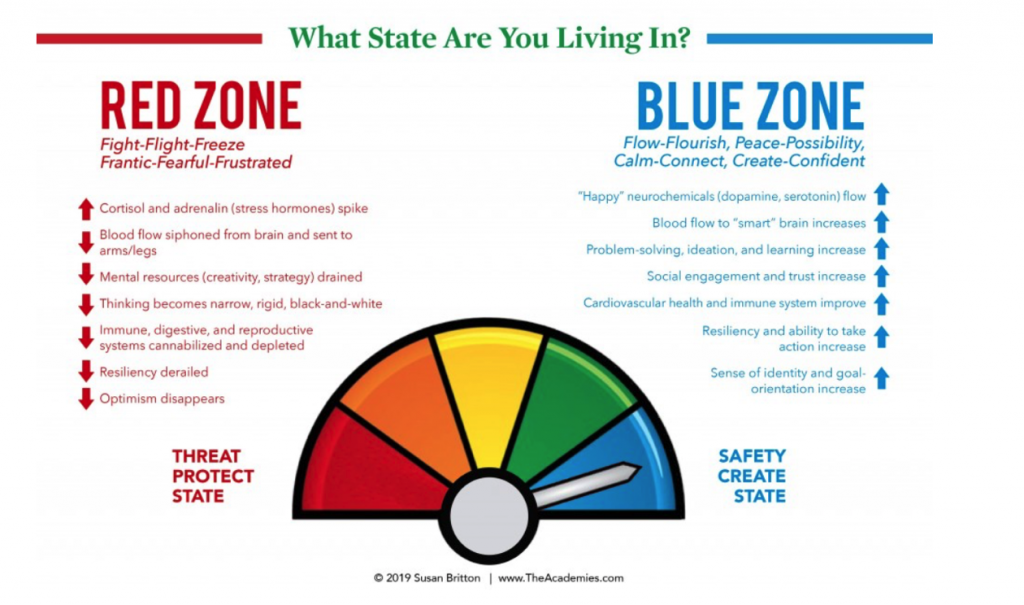The Red Zone and the Blue Zone
A self-care tool
Thinking in Narratives
The Red Zone and Blue Zone is a tool that is all about thinking and our brain.
Our brains spend 60 – 70% of time in the “Default Network” or “Narrative Network.” It’s the place where your “committee” is meeting in your head. In the circumstances we are living through the thoughts (i.e., voices) when unchecked, can tend to be negative and tell you everything that is and will be going wrong. It can be hard to admit these thoughts, but they are there; but it’s how we perceive and handle them that drives our wellbeing.
Dr. Daniel Amen, psychiatrist and a brain disorder specialist refers to this type of thinking as holding negative thoughts – ANTs (Automatic Negative Thoughts). The good news is we can manage them and not allow them to distract or derail our intentions.

THE RED ZONE AND BLUE ZONE
A tool that can be useful is the Red Zone / Blue Zone What state are you living in?. This model captures what happens to us physiologically and emotionally when our brains perceive circumstances as stress. Below is a chart that outlines this concept, and can help build awareness of your current state. Are you in the Red Zone (fight-flight-freeze, frantic-fearful-frustrated state, which is?), or are they in the Blue Zone (a mindset where they experience: flow-flourish, peace-possibility, calm-connect, create-confident).

The 4 c's
When we move out of the Red Zone, we are more able to move away from the narrative network.
The 4Cs:
- Connection
- Collaboration
- Creativity, and
- Compassion
All help us to move into the ‘Experiential Network’; this is the place where we will notice things intentionally.
Connection - make an effort to try to connect with other colleagues, mentors, family, and friends that can all offer support and guidance.
Collaboration – build upon connections for problem-solving, ideation, and learning
Creativity – imagine new ways to solve the problem and become part of the solution.
Compassion – forgive yourself and be open to learn and grow from your character defects and extend that compassion to others.
THE experiential network
If we can join in with the Experiential Network, we can be present and aware of our surroundings. We are not imagining disaster scenarios. Then we can be more focused and self-aware as the information comes through our five senses.
When we start to move into the Blue Zone, our neurochemicals – dopamine, oxytocin, and more – help us feel better. We feel happier and safer and this helps us move into a more compassionate, creative, and connected state — a place where we can feel part of a team, can start to embrace change and look forward to a more positive future state.
Work on being ‘present’. Do things with intention and be aware of the Red and the Blue Zones. You and your teams will go back and forth from the “never-ending silent narrative” that we create. It’s what you do with that narrative that matters. Focusing on being positive, getting involved, and being creative get the happy juices flowing and make it more possible to enjoy the moment.
With thanks to Rebecca Potts.
